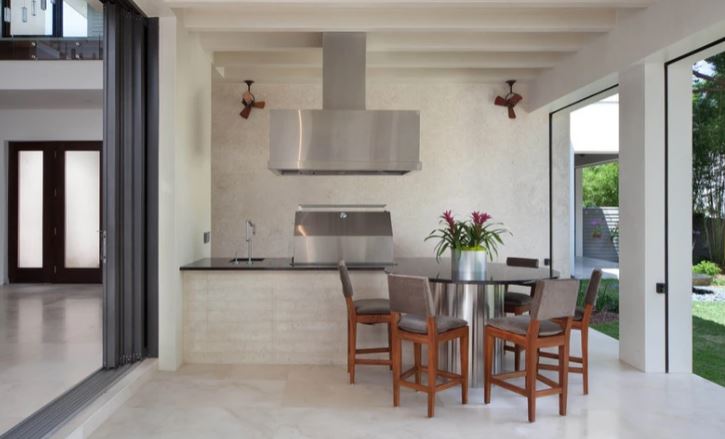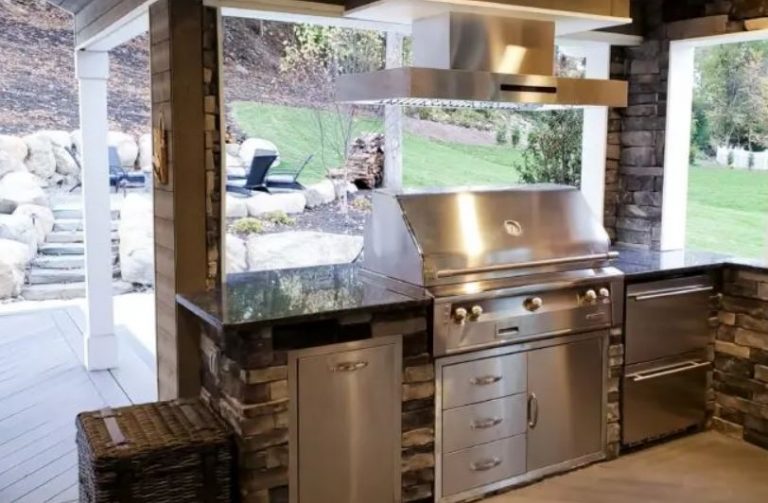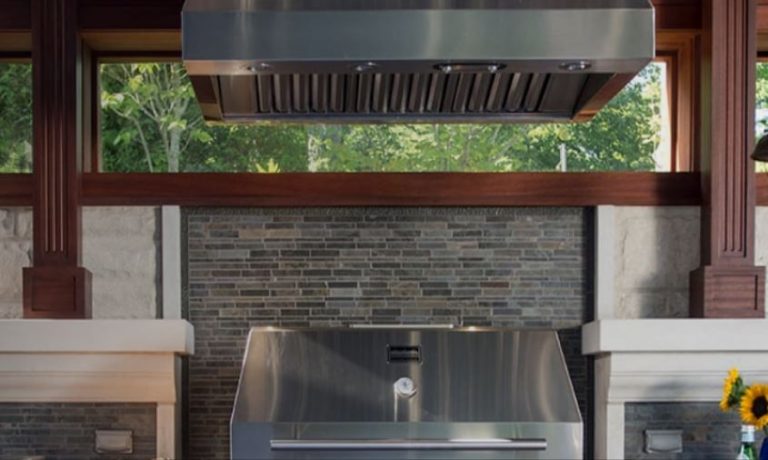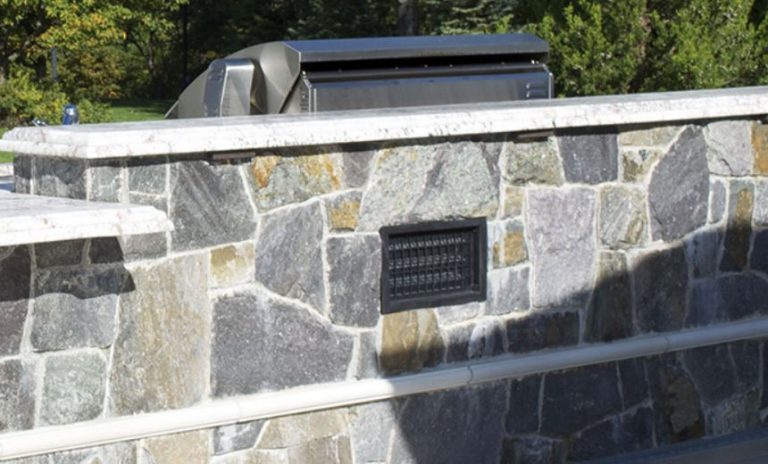How Much Ventilation Do You Need for an Outdoor Kitchen?
What’s Enough Ventilation for Your Outdoor Kitchen?
Most people overlook the vent hood and ventilation when planning an outdoor kitchen, but it should be one of the first considerations. Because the vent hood doesn’t cook food, it’s easy to overlook it. However, cutting back on ventilation might result in a smoke-filled, unusable outdoor kitchen. Your outdoor kitchen creates a lot of heat, smoke, toxins, and grease that will discolor and damage your ceiling, cabinets, and furnishings, therefore you’ll need an outdoor range hood with a powerful fan to protect your investment.
What is the significance of the vent hood? There is nowhere for the smoke, grease, and heat from barbecue grills to go. To keep your outdoor kitchen as smoke-free as possible, you’ll need airflow unless it’s entirely open.
Don’t Forget About Outdoor Kitchen Ventilation
Part of the appeal of constructing an outdoor kitchen is the ability to cook using grills that aren’t suitable for indoor usage. However, the smoke and gases from these barbeque grills must still be redirected somewhere. That’s where the outdoor vent hood comes in.
When designing an outdoor space with a bbq grill or charcoal grill, local rules may require vent hoods to clear the area of smoke, but even if they aren’t, you should definitely consider including them in your plans.
Install an outdoor vent hood to manage grease and smoke when your grilling setup is located beneath an enclosed or even semi-enclosed overhead structure. A vent hood can also help to manage smoke that might otherwise get into other areas of your outdoor kitchen, causing your guests to be uncomfortable.
Continuous grilling on a cooking device such as a charcoal grill set against an exterior wall will cause streaks and marks on the wall from the smoke if not vented properly, in addition to avoiding smoke build-up.
Vent Hoods for the Outdoors
Vent Hoods for the Wall
This is the most popular vent hood option, often known as wall mount chimneys. This type of hood is mounted directly to the wall and extends out over your bbq grill.
Vent Hoods on an Island
Outdoor kitchen island mount vent hoods are attached to the roof and are intended for use in areas without a wall to connect the hood to.
What to Look for in a Vent Hood
Look for a fan with a minimum of 1200 CFM (cubic feet per minute). Blower speed is measured in cubic feet per minute. To put it another way, it shows how much air a fan moves. An indoor hood can move between 300 and 600 CFMs. A cubic feet performance wholly inadequate for an outdoor grill.
To handle smoke better, the vent hood should be larger than the grill. To ensure that all of the smoke is collected, most manufacturer recommends going 6–8” larger than your grill. This will reduce smoke buildup in the region.
The ventilation hoods depth is critical for maximum smoke removal. When you open your grill, would the vent hood be able to clear the smoke that billows out the front? Most vent hoods won’t be able to control the smoke at the conventional 27-inch height because outdoor kitchen surfaces are typically 30 inches deep. Some firms sell hood extensions to make up the difference, however this is an additional cost. Look for a vent hood with a depth of at least 30 inches and a width of at least 42 inches and CFM above 1200 and make space for it when planning your outdoor kitchen design.
For easy cleaning, search for a vent hood with dishwasher-safe components. Some types have specially constructed baffles that absorb the maximum amount of grease before it enters the ducting, preventing build-ups. Because a dirty vent hood might cause a grease fire from builtin grills, choosing a vent hood that is simple to clean should be a top concern.
Don’t underestimate the importance of ventilation. While the vent hood may appear to be a cost-cutting measure, the cost of installing one after the outdoor kitchen is complete is several thousand dollars — substantially more than if you had done so from the beginning.
If you want your backyard to be a location where you can eat wonderful cuisine and mingle with friends, make sure it is a safe atmosphere for everyone.
The fat and oil in the air will collect on your cooking area and grill surface if you don’t have a backyard hood. Your appliances, walls, and ceiling will grow grimy over time in covered patios. A range hood in your backyard will save you time cleaning this area while also protecting your investment.
Overall, venting your outdoor grill improves airflow in your covered patio, prevents the roof from catching fire, and removes excess smoke, grease, and heat from your outdoor kitchen.
Photo: Summerset Grills




